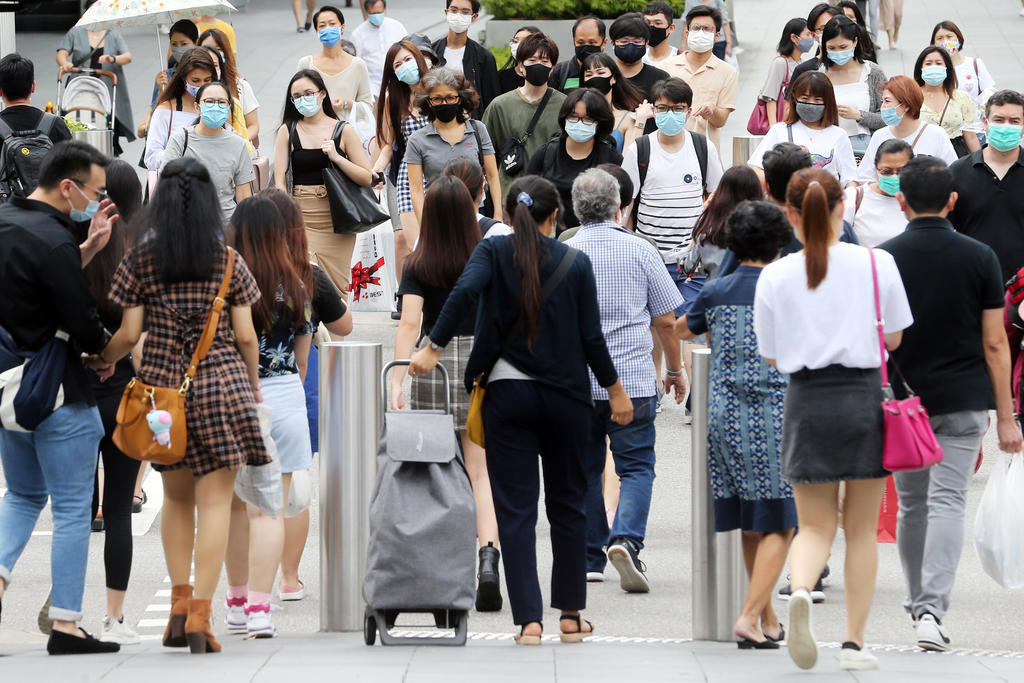SINGAPORE, June 18 — Compared to previous downturns such as the 2009 Global Financial Crisis and the 2003 severe acute respiratory syndrome (Sars) pandemic, Singapore's youth unemployment rate was higher in 2020.
This is likely because it was challenging for young people to secure part-time or temporary employment in the retail and food-and-beverage (F&B) industries, the Ministry of Manpower (MoM) said yesterday (June 17).
In its latest labour market report for the first quarter of this year, MoM noted, however, that “youth unemployment is mostly transitional and short term” and the overall long-term youth unemployment rate was still in line with past downturns and lower than in other advanced economies.
The youth unemployment rate was 10.6 per cent in 2020, compared to 8.8 per cent during the Global Financial Crisis and 9.3 per cent during the Sars pandemic.
Singapore's youth unemployment rate was also higher than in countries such as Japan and Korea but lower than in Taiwan and Hong Kong.
A person aged 15 to 24 is defined as a youth.
The long-term unemployment rate among the youth was 1.1 per cent in 2020, comparable to the overall average of 1 per cent, and during the Sars pandemic (1.3 per cent) and the Global Financial Crisis (1 per cent).
MoM explained that in Singapore, long-term unemployed refers to those unemployed for at least 25 weeks. In other economies, long-term unemployment refers to those who have been unemployed for at least six months.
Singapore’s long-term unemployment rate among the youth is also one of the lowest when compared against other economies such as France (8.4 per cent), the United Kingdom (4 per cent) and Hong Kong (3.8 per cent).
MoM reported that similar to other countries, the unemployment rate among young people here has been consistently higher than in other age groups as it reflects the job search activities of fresh graduates entering the labour market, higher churn as a result of exploring different jobs, and youth who frequently move between temporary and part-time jobs while studying.
MoM also said that four in 10 youth in employment were in temporary or contract jobs, and were mostly students who were working on the side.
When it came to economic “idleness”, MoM reported that it was less of an issue in Singapore compared to other countries despite the proportion of youth population who were not in employment, education or training rising to 5.3 per cent in 2020 compared to 4.5 per cent the previous year.
What economists say
Commenting on the report, economist Song Seng Wun from CIMB Private Bank said that it was not a surprise, given that last year saw the worst economic contraction in Singapore’s history.
“It's just a reflection of the macroeconomic conditions, where businesses see activities shrinking because of the restrictions and the pandemic, so demand for labour obviously fell.”
Song noted that demand for labour in the F&B industry, where many young people take up part-time employment, was halted due to the circuit breaker period from April 7 to June 1 last year that restricted non-essential activities.
When these F&B establishments opened, he said that employers did not hire as many people as they used to, instead using technology and other means to provide their service without adding more people on their payroll.
Looking ahead, Song expects the long-term unemployment rate to ease back to 1 per cent, given that labour market conditions have improved this year.
“Policymakers have come in to help businesses create digitalisation processes, which also create opportunities for many students who are more tech savvy to be employed,” he said.
Senior economist Chua Hak Bin from Maybank Kim Eng said that the youth employment rate will likely recover more strongly when social restrictions are relaxed and F&B establishments can reopen fully.
He added that more young people could also be choosing to take on training or college courses until the job market improves, which is why unemployment rates are higher compared to previous downturns.
Dr Chua said that the youth unemployment rate is only “temporarily high” because of the heightened measures and restrictions on F&B and retail, which is why long-term unemployment rates are in line with past downturns.
Selena Ling, the head of treasury and research at OCBC bank, said that long-term unemployment rates are “very manageable” because at 1.1 per cent, it is the lowest compared to other countries.
“The question is how fast the 10.6 per cent youth unemployment rate declines and normalises in the coming months or years,” she added.
Ling believes that the rate should decline, albeit at a slower rate than in past post-crisis recoveries due to the “long tail” of the Covid-19 pandemic. ― TODAY






















